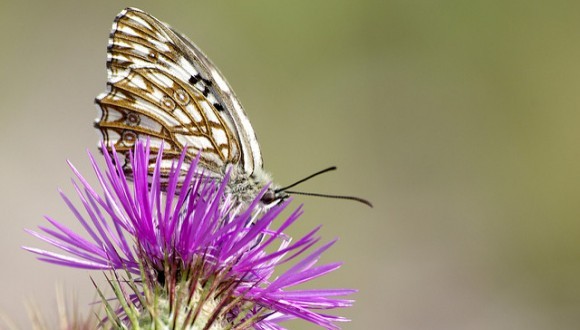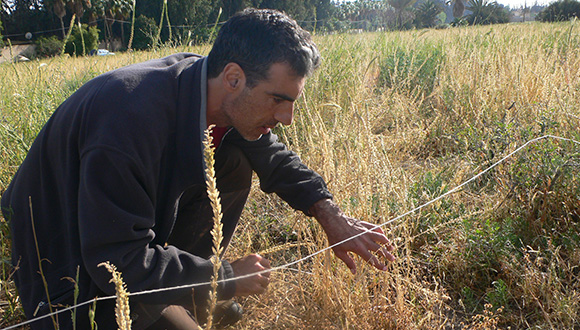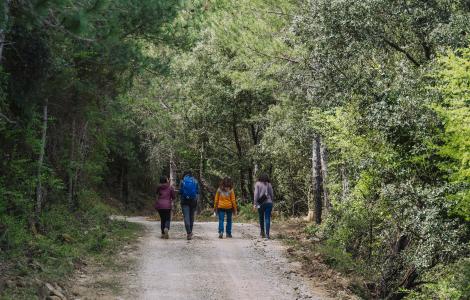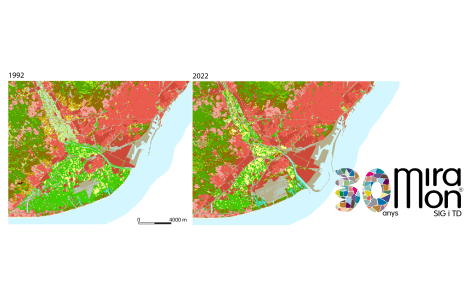70% of Mediterranean butterfly species are in decline

CREAF researchers signal climate change and changes in land use as the principal causes. The most impacted are specialized species living in very specific habitats and those producing a number of generations in a single year.

For two decades, researchers from CREAF and the Museum of Granollers have studied butterfly populations of Catalonia, Andorra, and the island of Menorca - now they report that nearly three quarters of butterfly populations from these regions are in decline. One of the main causes is global warming which is worsening drought in the Mediterranean region. The other is changes in land use destroying butterfly habitat, particularly leading from urbanization, abandonment of open spaces, and intensive agriculture.
The most affected species are specialists, those which live in very specific habitats, as well as those which reproduce a number of times during the year. However, lead author of the study Yolanda Melero warns that “generalist species are also suffering population declines, which goes to show that we are facing a global loss of biodiversity.”
It is not always advantageous to reproduce multiple times per year
«The Mediterranean region and climate change accentuate the summer drought, and this is a problem for species which must reproduce several times during the summer» remember the ecologist Stefanescu.
Traditionally, in conservation biology, it has been considered that insects which produce multiple generations in a year are most capable of adapting to environmental changes. This strategy is normally associated with a high capacity for population growth, effectively reducing the risk of extinction; however, the recently published study has shown that this is not always the case. “Butterflies which reproduce a number of times per year appear to be more susceptible to climate change due to the fact that the negative effects of climate accumulate over several generations,” explains Constantí Stefanescu, researcher from CREAF and the Museum of Granollers.

Populations with large fluctuations have a greater risk of extinction
While decreases in the abundance of butterflies is an indicator that something is going wrong, other factors need to be taken into account in order to assess the future of butterfly populations. The researchers from CREAF have seen that the most unstable populations (those in which the number of individuals vary greatly) are those most vulnerable to environmental factors; that these populations continue to be prone to fluctuations also means that certain at times of the year the population will be composed of very few individuals, and it is in such moments that environmental pressures could cause the total disappearance of the butterfly. Again, the most unstable populations are those with several annual generations and those which specialize in living in very specific habitats.
More than 20 years of citizen participation
The study was made possible thanks to the collaboration of more than 100 volunteers from the Catalan Butterfly Monitoring Scheme (CBMS) project, coordinated by the Museum of Granollers with support from the Catalonian government’s Department of Territory and Sustainability.
Studies of demographic trends are rare due to the large amount of data required, but this undertaking can be made possible with the help of citizens. In this case, volunteers had been assisting in monitoring of the lepidopterans (referring to the order of insects including moths and butterflies) for 23 years. Participating volunteers were first required to go through a learning period so that they could identify the insects they found.
The censuses consisted of visual counting of adult butterflies every week between March and September, which is the time of flight of most species. Participation in the project requires a huge dedication, so this is in itself a clear sign of the growing interest and appreciation of the natural world shown by citizen participants.

ARTICLE
Melero Y., Stefnescu C., Pino J. General declines in Mediterranean butterflies over the last two decades are modulated by species traits. (2016) Biological Conservation. DOI: 10.1016/j.biocon.2016.07.029
Noticias relacionadas

El IPBES publica dos informes para transformar la forma en que nos relacionamos con la naturaleza, conservarla y sobrevivir

El impacto social de la investigación se consolida en la cultura científica del CREAF



